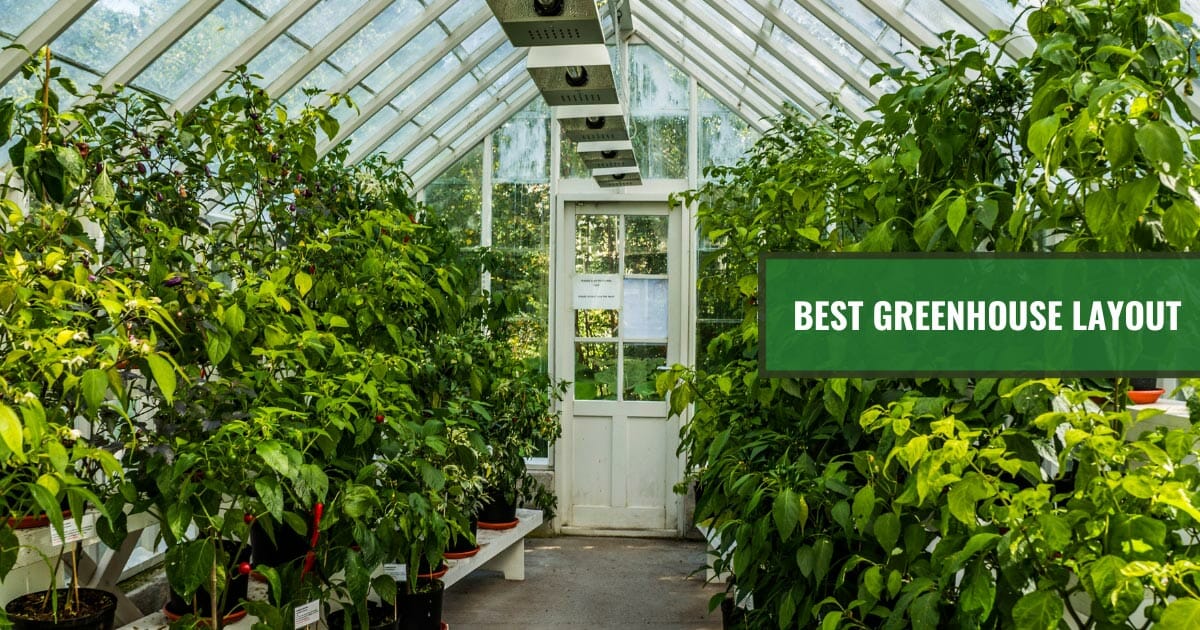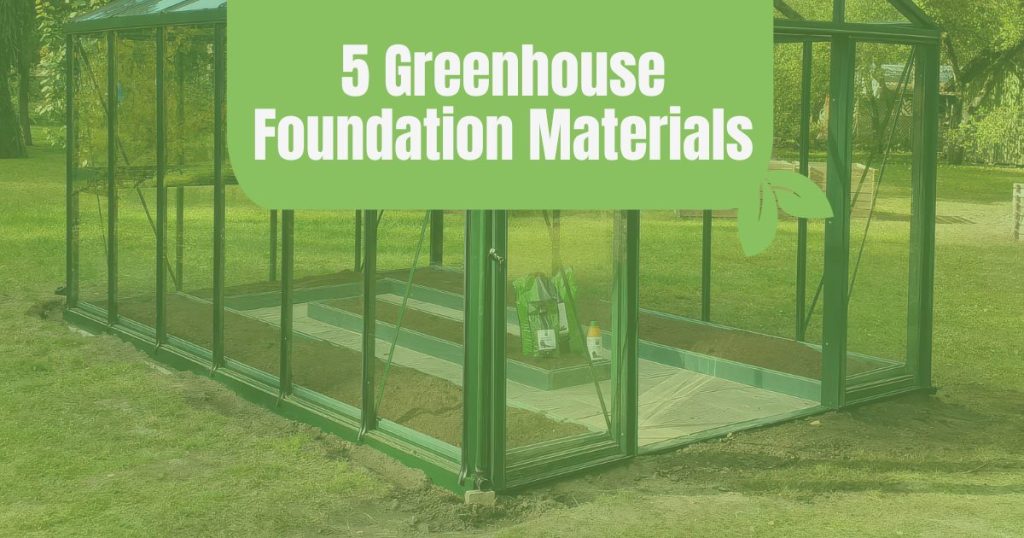

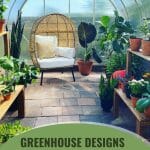

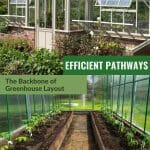
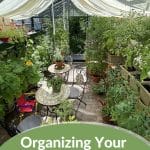

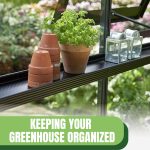
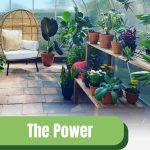
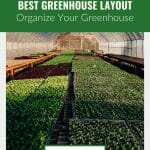
There are lots of choices when it comes to planning the best layout for your greenhouse. Organizing is a bit of a flip of the coin. Some people love it and could spend hours alphabetizing their seed collection; others are happy to throw everything in a pile and go digging for whatever they need.
We’re not here to judge; we think that both are equally valid. However, when it comes to your greenhouse layout, working neatly and optimally is really the only way to go.
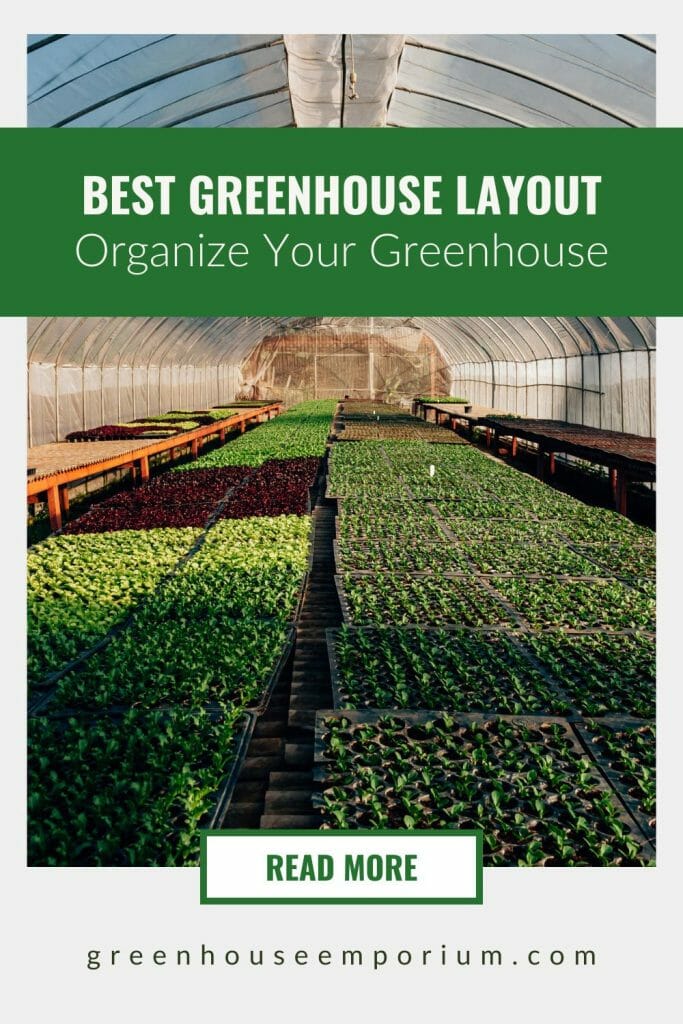
Because you’re constrained to a limited space, you can’t spread out like you could with an open-air garden.
This means it’s crucial that you carefully plan the layout of your greenhouse so you have the necessary storage and workspace but can still walk around and aren’t cutting into the space available for growing.
Obviously, the best layout for your greenhouse is going to change depending on a number of different factors: your greenhouse dimensions, what plants you want to grow, and what kind of greenhouse accessories and equipment you use all affect what layout you use. However, we’ve spent years working on and with greenhouses, and we’ve got some tips on what to look for.
What this article covers:
- Planning your greenhouse layout
- Choosing the right greenhouse design
- Greenhouse internal layout
- Neat, efficient, greenhouse layout
Planning your greenhouse layout
As with everything else in life, planning your greenhouse layout is key to success. But you can’t just grab a piece of paper and start sketching, you need to consider a few key factors first.
Available space and resources
A crucial step in creating the best greenhouse layout is assessing the space and resources available, which includes preparing a base of a greenhouse.

Understand the area your greenhouse will be occupying. It’s not only the floor space that matters but also the vertical space. If your greenhouse has high ceilings, you can maximize them with hanging plants or tiered shelving. If space is an issue, you can always have some luck considering where to position a mini greenhouse.
Knowing your resources is equally vital. What is a greenhouse made of? Have you considered access to water, electricity, heating, and cooling systems? If you’re looking into an aquaponic greenhouse setup or any other variations that require specialized equipment, you need to allow extra space.
Evaluate the soil quality if you’re planning on planting directly into the ground. If it’s poor, you might opt for raised beds or containers instead.
A clear understanding of your available space and resources should guide your decisions on what kind of plants you can grow, the number of plants, and the type of gardening methods to employ.
Climate and environmental factors
Every locale has a unique climate and specific environmental factors, which significantly impact greenhouse gardening. For instance, if your region is prone to high winds, your greenhouse should be anchored securely, and the layout should ensure stability against strong gusts.
Take note of the direction of sunlight throughout the day. Most plants thrive best with ample morning sun and less intense afternoon sun. Therefore, determining your greenhouse direction, what percentage of shade cloth for greenhouse, and its internal layout to take advantage of these light patterns can improve plant health and productivity.
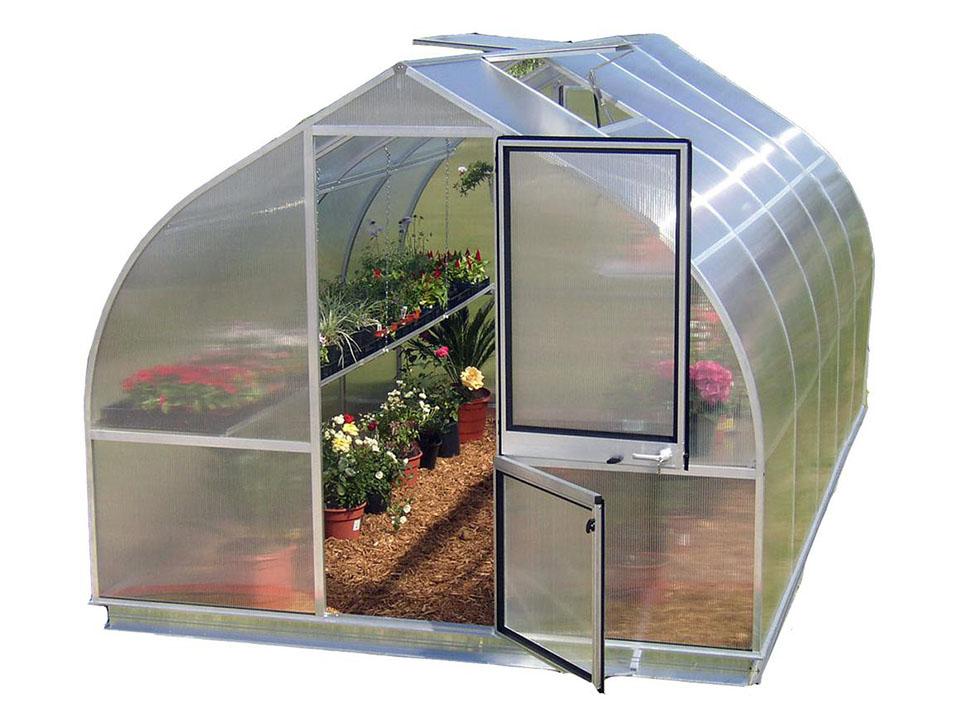
Understanding your local climate will also help you determine whether or not you need an insulated greenhouse kit. If your area experiences cold winters, incorporating an effective heating system and installing insulation materials in your greenhouse layout will be beneficial.
Setting goals and determining the purpose of your greenhouse
Lastly, to plan an efficient layout, you need to set clear goals and identify the purpose of your greenhouse. Are you growing plants for your consumption, for sale, or do you merely need some hobby greenhouse tips? Do you want to cultivate exotic plants, create a year-round vegetable garden, or start seedlings for your outdoor garden?
If you’re into vegetable gardening, you might want to consider creating designated spaces for various types of crops – leafy greens in one area, root crops in another, and so forth. For those interested in floriculture, consider the aesthetic arrangement of your plants, with taller plants at the back and shorter ones in the front for visibility and easy access.
If the purpose of your greenhouse is to extend the growing season or start seedlings early, your layout should accommodate temperature and light control features.
Planning your greenhouse layout with these considerations will ensure that your setup is optimized for your needs, making your greenhouse gardening journey more fruitful and satisfying.
Choosing the right greenhouse design
There are various designs and structures that greenhouses come in, each serving a unique purpose and offering different benefits. The most common types are lean-to, detached, ridge and furrow, and gutter-connected greenhouses, and each of these will affect how you use its space.
Lean-to greenhouses
These greenhouses are attached to another structure, like a house or a garage. They have the benefit of easy accessibility but are usually limited in space.
Detached or free-standing greenhouses
These are independent structures that can be placed anywhere on your property. They’re typically more spacious than lean-to greenhouses and offer more layout options. You can even get them in various designs, from the classic style to the more expansive geodesic, onion-shaped or orangery styles.
Evaluating the pros and cons
Each design has advantages and disadvantages.
Lean-to greenhouses, for example, are economical and convenient but limited in size and dependent on the existing structure’s orientation.

On the other hand, detached greenhouses offer more space and versatility, but they require separate systems for utilities and can be more costly to install and maintain.
Ridge and furrow, as well as gutter-connected greenhouses, are excellent for large-scale production but may be too complex and expensive for hobby gardeners. Furthermore, these designs require a significant amount of space.
Sizing your needs
The ideal greenhouse size depends on your specific needs and the space you have available.
If you’re a hobby gardener with limited space, a small lean-to or detached greenhouse might suffice. However, if you’re planning to grow a large variety of plants or intend to sell your produce, a larger, detached greenhouse could be more appropriate.
When selecting a size, consider future growth. You might start with a modest collection of plants, but as your interest and skills grow, so too might your plant family. As a rule of thumb, it’s better to have a little extra space than to wish you had more later on. Also, keep in mind that larger greenhouses can be easier to keep humid and warm due to the larger volume of air.
By understanding different types of greenhouse designs and carefully considering their pros and cons in relation to your needs, you can choose the ideal greenhouse layout that fits your requirements and sets the stage for a successful gardening venture.
Greenhouse internal layout
So we know what we’re looking for and we’ve chosen an appropriate type of greenhouse to suit our needs. That should be it, right? Not quite.
After you’re finished making a greenhouse, the next step is to set up the inside. It’s easy to go overboard and dedicate all your available space for planting, or go in the opposite direction and use far too much for shelves, storage, and workbenches.
Planning the internal layout of your greenhouse not only plays a huge role in getting the optimum yield from your plants, but it also determines how easy it is to use. If you can’t move around comfortably inside, you’re not going to have a good time working inside.
Designing efficient pathways and access points
Efficient greenhouse layout allows you easy navigation and access to all plants. The pathways should be wide enough to walk through comfortably, typically at least two feet; wider if you plan to use wheelbarrows or carts.
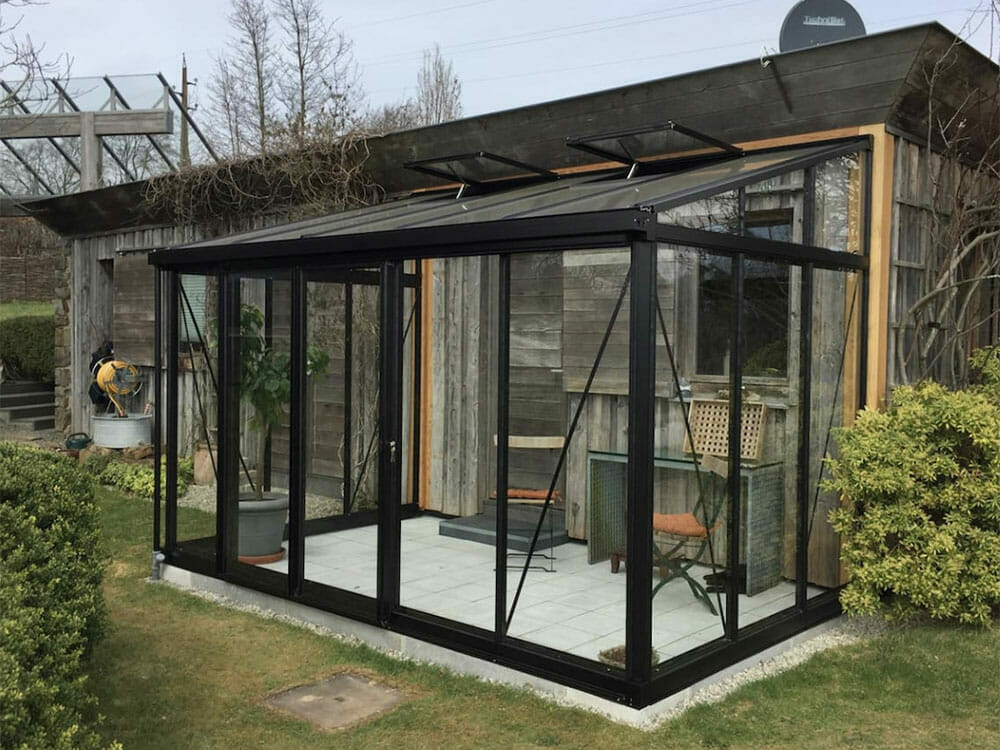
Aisle width is a balancing act; wider aisles offer more room to move, but they also reduce growing space. Try to optimize your design for both ease of access and maximum growing area. Consider the fewest aisles you could get away with to still have access to all of your greenhouse space.
If you’ve built a small solar greenhouse, you need to be cognizant of where you’re keeping your thermal storage and what you’re using for them. Things like water barrels can easily get in the way if you’re using a wheelbarrow, especially if your greenhouse is smaller.
Arranging benches, shelves, and work areas
The arrangement of your benches, shelves, and work areas can greatly impact your productivity and the health of your plants.
Place your benches in a way that allows maximum exposure to sunlight for all plants. A common arrangement is to place benches along the sides of the greenhouse, with a central aisle for access.
Shelving can also potentially provide additional storage or growing space, especially for smaller plants or seedlings. Adjustable shelves can be particularly useful to cater to the varying heights of different plants.
A dedicated work area, even if it’s small, makes tasks like repotting plants or starting seeds much more comfortable. This area should have easy access to tools and be located near a water source, if possible.
Proper ventilation and air circulation
Proper ventilation is critical for the health of your greenhouse and plants. It controls temperature, humidity, and prevents the buildup of plant diseases. You can achieve natural ventilation by strategically placing doors, vents, and windows to encourage airflow. Roof vents, in particular, release the hot air that escapes as it rises.
For larger greenhouses or in warmer climates, mechanical fans may be necessary to ensure adequate air circulation. They should be placed in a way that pushes air across the entire length of the greenhouse, preferably from one end to the other, to avoid creating dead air zones.
Arrange your plants and furniture so they don’t obstruct airflow. Stacking too many plants together or placing tall, bushy plants in front of fans or vents will stop the air from flowing freely.
By designing efficient pathways, arranging your benches, shelves, and work areas strategically, and ensuring proper ventilation, you’ll be well on your way to creating an optimal greenhouse layout that boosts your gardening success.

Neat, efficient, greenhouse layout
Your greenhouse layout is only as good as you keep it. There’s no use in spending hours planning and assessing the best layout for your greenhouse if you’re not going to keep it organized and tidy.
If you’re like some of us and you struggle keeping things orderly, you don’t have to worry. There are some tips and tricks that will help you keep everything in its place without making it feel like a chore.
Labeling systems and plant markers
The first port of call is labeling and plant markers.
These help you remember plant specifics like the type of plant, planting date, and care requirements. You can use commercial plant markers or create your own from easy-to-find items like popsicle sticks or plastic spoons.
Consider keeping a garden journal or using a gardening app where you can keep track of important details about each plant, such as when it was sown, its estimated maturity date, any pests or diseases it has encountered, and the treatments applied.
Storing tools and supplies
An organized greenhouse should have a designated area for tools and supplies.
This not only keeps your working space clean but also ensures you can easily find what you’re looking for quickly. Hang commonly used tools like pruners, trowels, and gloves on a pegboard or in a tool rack so they’re out in the open where you can see them.
Store larger equipment, like wheelbarrows or garden carts, in a place where they won’t obstruct pathways.
It’s also a good idea to have a waste bin in your greenhouse for immediate disposal of dead leaves or plant clippings.
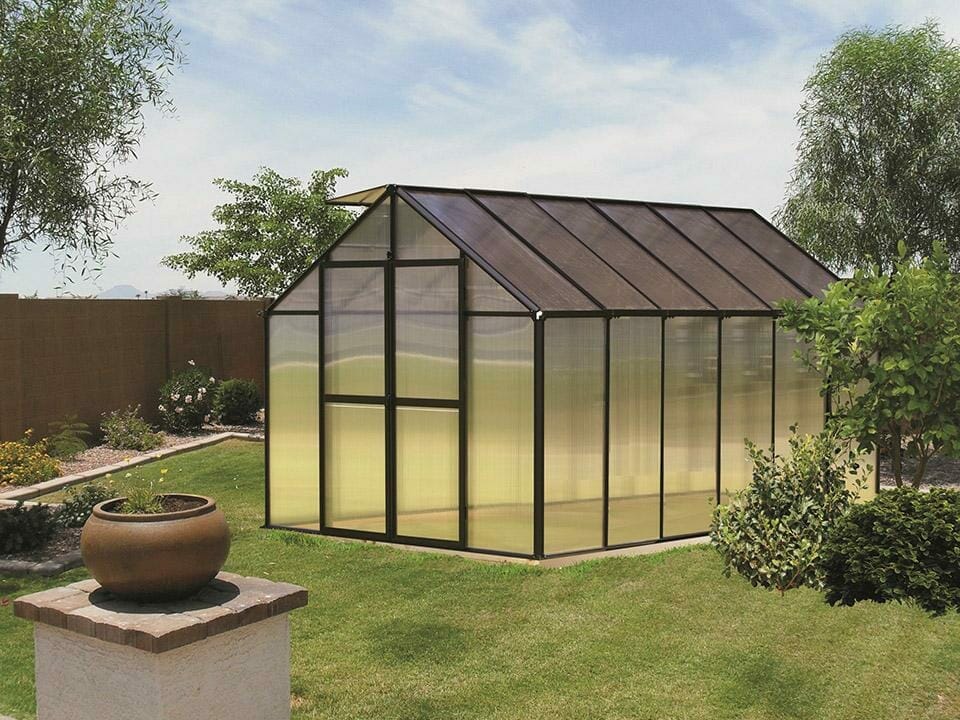
Storage for seeds and fertilizers
Seeds and fertilizers need special storage conditions to maintain their quality. Seeds should be kept in a cool, dark, and dry place. A storage box with separate compartments can be handy for organizing different types of seeds. You might consider using envelopes or small jars labeled with the seed type and date of collection or purchase.
Fertilizers, on the other hand, should be kept in a dry, well-ventilated area away from direct sunlight. Make sure they’re in a secure container to prevent moisture from getting in, which could cause clumping or degradation of the product.
Always remember to store these items in a place inaccessible to children and pets, as they can be harmful if ingested.

